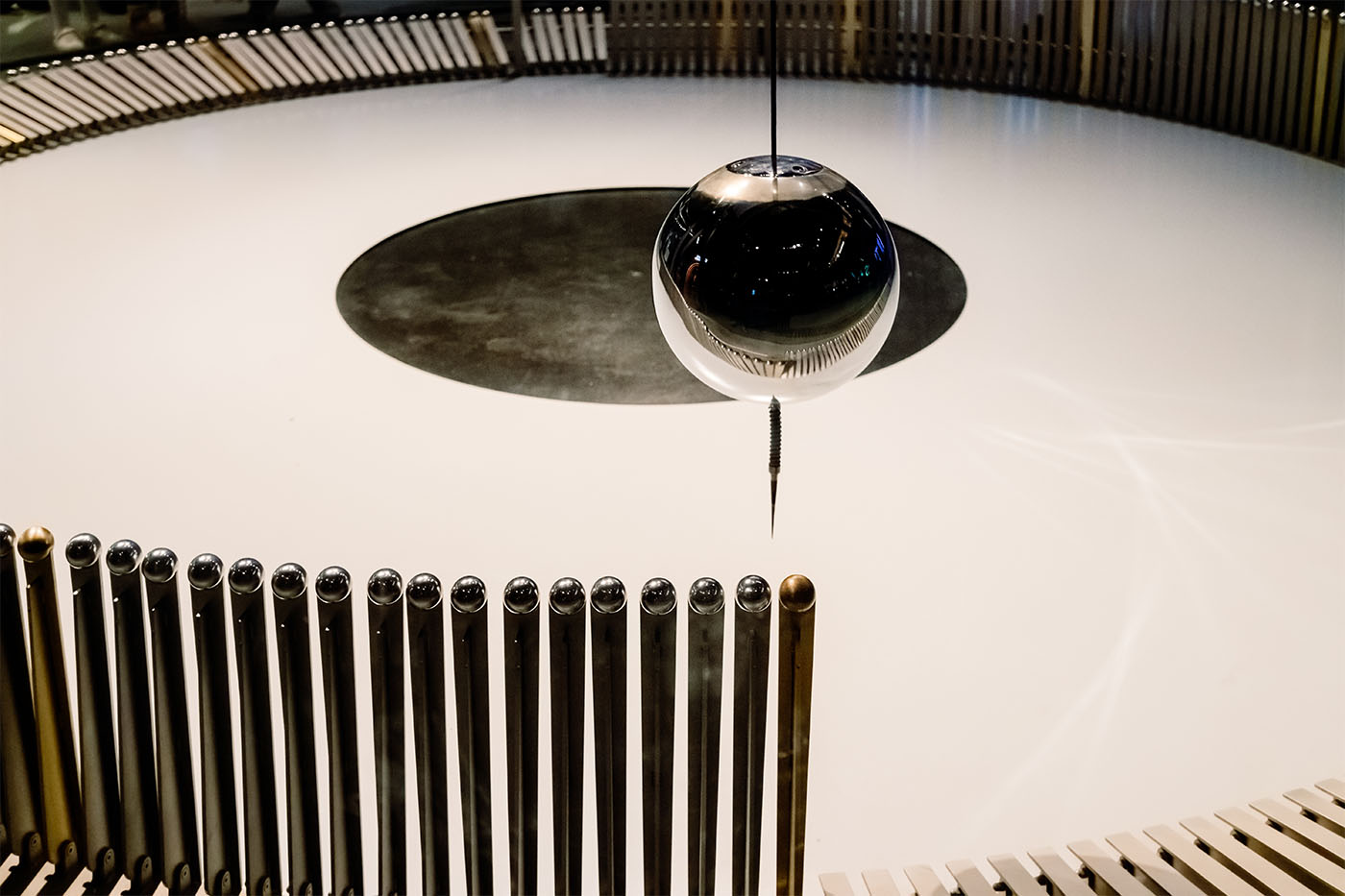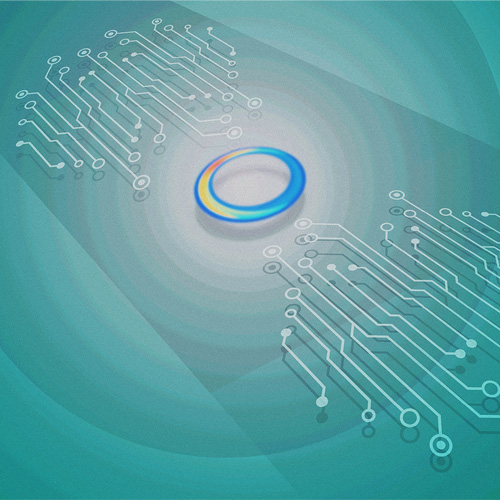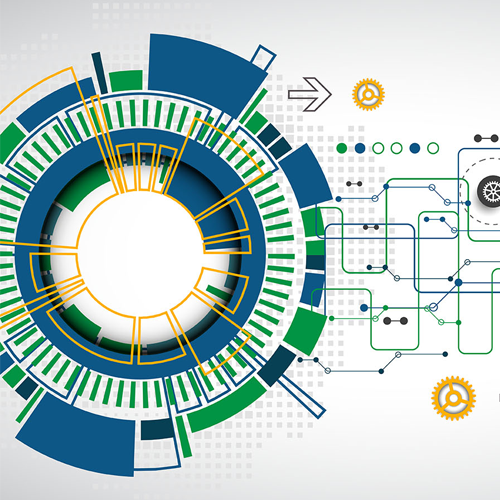Highlights
Less noise, please: a review of geometric quantum computing
 In classical physics, the precession of Foucault’s pendulum is explained by geometric phase. In quantum physics, geometric phase could be a path towards fault-tolerance in quantum computation. Image credit: Shutterstock.com/Joaquin Corbalan P
In classical physics, the precession of Foucault’s pendulum is explained by geometric phase. In quantum physics, geometric phase could be a path towards fault-tolerance in quantum computation. Image credit: Shutterstock.com/Joaquin Corbalan P
The performance of current noisy intermediate-scale quantum (NISQ) computers is hampered by the noise for which they are named. In a review published in Physics Reports on 13 July 2023, CQT Principal Investigator Kwek Leong Chuan and his co-authors survey an approach that could bring more robustness to quantum information: quantum computing with geometric phase. The review runs over 50 pages and covers over 350 references.
“Geometric phase has always provided an interesting twist in physics,” says Kwek. “It emerges naturally in many fields ranging from optics to nuclear physics and gravitation to solid state physics. The idea has been applied also to quantum computation.”
One classical phenomenon that can be explained by geometric phase is the precession of Foucault’s pendulum. Due to the rotation of the Earth, the plane of swing of a pendulum placed at the North Pole rotates nearly 360 degrees during a day, without the pendulum being touched. This phase difference over a cycle results from the geometrical properties of the space the pendulum is moving through.
In the quantum world, geometric phase also plays a crucial role. For example, a magnetic field can act like the Earth’s rotation to influence the phase of electrons moving through it. Researchers realised some years ago that such geometric phase shifts could be assembled into a full set of logic gates for quantum computing.
Because geometric phase depends only on the evolution of a quantum system over a closed path, which can be specially designed and controlled, quantum gates based on geometric phase possess in-built resilience to certain kinds of errors, such as random noise in control settings and the environment.
A standard attack plan for noise in quantum computers is to use many extra qubits to correct errors as they arise, but making more qubits comes with challenges of its own. Kwek says “There is increasing need to look at other means of fault-tolerant quantum computing, and geometric or holonomic quantum computing offers one alternative.”
The review is organised into three main sections. The first section introduces the basic concepts of geometric phases and the different kinds of geometric phase. The next section reviews the different schemes for geometric quantum computing and their experimental realisations. Geometric quantum computing has been realised on platforms including ion traps, neutral atoms, superconducting qubits and solid-state devices. Work by CQT Principal Investigator David Wilkowski with strontium atoms is cited in this section.
The third and final section describes how geometric quantum computing can be combined with other error suppression and correction techniques, such as implementing geometric gates with protection from decoherence-free subspaces or using quantum feedback control to reduce systemic errors. The review ends with the co-authors’ outlook for the field.
“This review is meant as a pedagogical guide for students who are keen on the subject,” says Kwek. “It has been planned over many years, consolidating our research in the area with outstanding results from elsewhere.”
Kwek’s co-authors are based in Canada, China, Germany and Sweden. They include Erik Sjöqvist, who is a former CQT Visiting Research Professor; and Thi Ha Kyaw, a former PhD student in Kwek’s group.
Learn more
Related Stories
 | Reviewed: the emerging field of atomtronics November 21 2022 |
Experiments reveal new potential for cold atoms in quantum simulation September 06 2018 | |
 | An in-depth review of algorithms for noisy quantum computers February 16 2022 |






